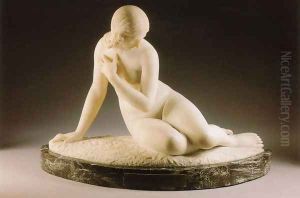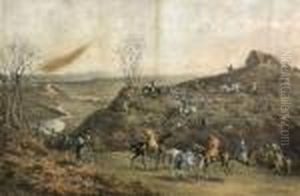Edward Hodges Baily Paintings
Edward Hodges Baily was a renowned English sculptor whose work has left a lasting impact on the art world. Born on March 10, 1788, in Bristol, England, Baily showed an early affinity for the arts, initially carving in wood and ivory before transitioning to the more esteemed medium of marble. His journey to prominence in the field of sculpture was marked by dedicated study and apprenticeship, notably with the eminent sculptor John Flaxman, who was widely recognized for his classical style and influence on contemporary sculpture.
Baily's career was a testament to his skill and versatility, earning him a prestigious position in the British artistic community. He was admitted as a student to the Royal Academy in 1809, where he won a gold medal for a bas-relief in 1811, a recognition that heralded the beginning of a prolific career. His works span a wide range of subjects, from classical mythology to contemporary figures, but he is perhaps best known for his iconic statue of Admiral Horatio Nelson, which adorns the top of Nelson's Column in Trafalgar Square, London. This particular piece, completed in 1843, stands as a testament to Baily's mastery of form and his ability to infuse marble with vitality and emotion.
In addition to the Nelson monument, Baily produced numerous notable sculptures throughout his career, including figures of Eve at the Fountain and Eve Listening to the Voice, which showcase his skill in capturing the beauty and complexity of the human form. He was elected a Fellow of the Royal Society in 1824 and became a Royal Academician in 1821, reflecting his significant contributions to the field of art and his standing among his peers.
Despite his success, Baily's later years were marked by financial difficulties, in part due to the changing tastes of the Victorian era, which moved away from the neoclassical ideals that characterized much of his work. However, his legacy as a sculptor remains influential, with his works still admired for their technical prowess and emotional depth. Edward Hodges Baily passed away on May 22, 1867, in London, but his contributions to the world of sculpture continue to be celebrated, ensuring his place in the annals of British art history.

